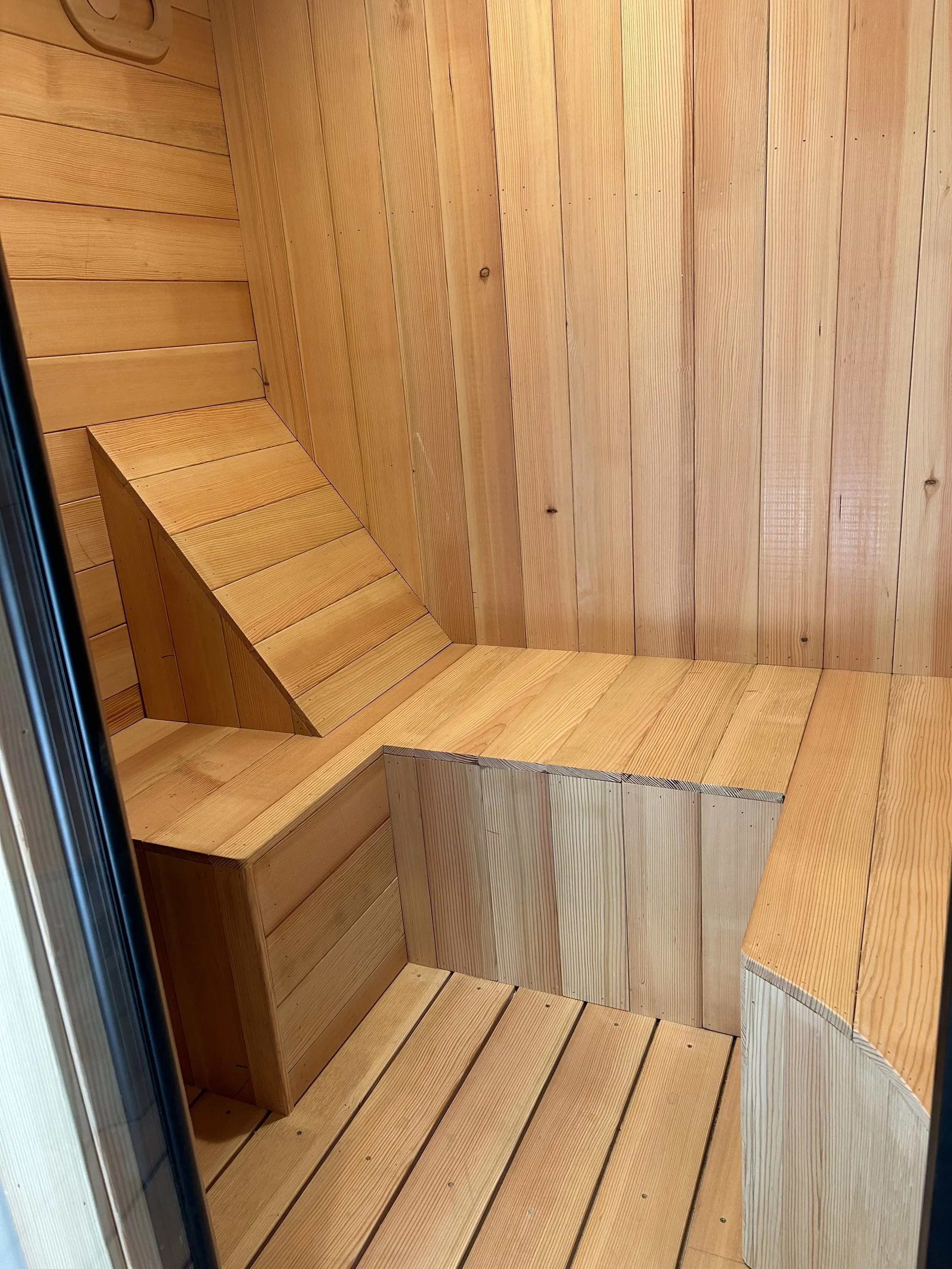
DIY: Build an Outdoor Sauna + Cold Plunge
Want to build it yourself? Here’s a concise, field-tested checklist for a backyard sauna with a nearby stock-tank plunge that you can chill with ice or seasonal temps.
1) Site & Base
- Choose well-drained ground with easy power access and short walk to the plunge.
- Base options: compacted gravel pad, pavers, pier blocks, or slab. Extend the base past walls for drainage; keep pad slightly above grade.
2) Framing & Weather Shell
- Typical stud walls (2×4 or 2×6), sheathed and wrapped with exterior house-wrap.
- Roof: shed or gable with proper flashing; overhang helps protect door and vents.
3) Insulation & Vapor Seal (hot room)
- Insulate walls/ceiling (e.g., mineral wool or batt).
- Continuous foil vapor barrier on the sauna side, seams taped air-tight.
- Interior cladding: tongue-and-groove softwood (cedar/hemlock) over furring to avoid contact with foil.
4) Ventilation (fresh air matters)
- Intake low, near the heater (often ~4″ above floor) to feed the heater with fresh air.
- Exhaust high on the opposite wall/diagonal (near ceiling) to promote cross-flow; a second low exhaust is optional.
- A small gap under the door can serve as supplemental intake.
5) Heat Source & Power
- Electric heater: follow manufacturer clearances; dedicated circuit, proper wire size, breaker, and licensed electrician.
- Wood stove: observe clearances, heat shields, chimney through-roof flashing, and outside air if needed.
6) Benches, Floor & Drain
- Two-tier benches (upper “hot”, lower “cooler”); smooth, splinter-free edges.
- Sloped floor to a drain (if practical) or removable duckboards with an easy clean-out plan.
7) The Cold Plunge (Stock Tank / Ice-Cooled)
- Tank: galvanized or HDPE stock tank on a level, sturdy base; add an insulated lid to slow warming and debris.
- Cooling: ice blocks/bags in warm months; in winter, outdoor temps may suffice. Place the tank close to the sauna, but with safe walk-paths and anti-slip mats.
- Water care (no chiller): quick pre-rinse before use, skim debris, periodic drain/refill. For multi-user setups, consider a small pump + cartridge filter and optional UV/ozone.
- Safety: keep any outlets/pumps on GFCI, cords elevated and dry; never use improvised “live” appliances in the water.
8) Finishing & Weatherproofing
- Exterior cladding that sheds water; seal end-grain; maintain caulks/flashing.
- Use vent screens to keep pests out; protect intake/exhaust from wind-driven rain.
Have questions about sizing, power, or vent placement? Ask us via the form and we’ll help you dial it in.